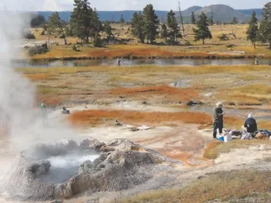Geomicrobiology and Microbial Geochemistry
Geomicrobiology and microbial geochemistry (GMG) investigates the interaction between Earth, environmental systems, and microbial life. Microbes shape their geochemical surroundings through their metabolic and growth needs and thereby exert significant geochemical and mineralogical control on their local environments. In turn, local geochemical conditions dictate what metabolic processes are possible. These mutual influences mean that microbial evolution has occurred in concert with changing geosphere conditions and that microbes have driven major shifts in ocean, continent and atmospheric chemistry. If one wishes to understand element cycling in any system containing water, one must realize that microbes are critical to the story.
Geomicrobiology and Microbial Geochemistry Read More »




